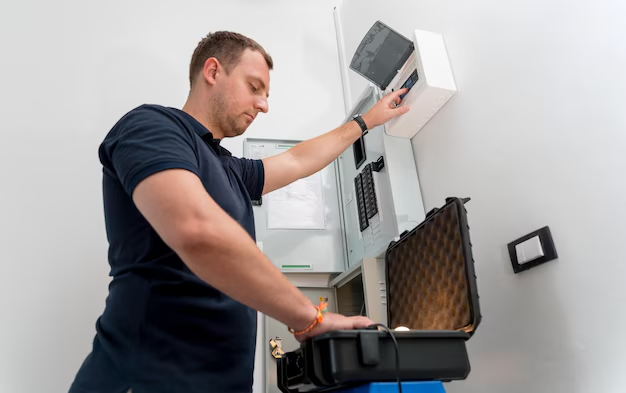Which HVAC Systems Qualify for Tax Credit in 2024? 🔍 Find Out Here!
As homeowners become increasingly aware of both environmental impact and energy efficiency, the government is stepping up with incentives to encourage the adoption of greener HVAC systems. With tax credits available for specific systems, 2024 offers an excellent opportunity for upgrades. But which HVAC systems qualify, and how can you maximize these benefits? Let’s dive deep!
Why Tax Credits Matter for HVAC Systems
Tax credits reduce the amount of tax you owe dollar-for-dollar, making them much more attractive than deductions which merely decrease taxable income. For many homeowners, upgrading their HVAC systems under the tax credit provision is a smart financial move, helping reduce both annual energy costs and income taxes. 💡
Understanding HVAC Tax Credits for 2024
What’s Change in 2024?
The landscape of tax credits keeps evolving, especially with the push for sustainable living. In 2024, tax credits are particularly aimed at systems that provide substantial energy efficiency improvements or utilize renewable energy sources. Understanding these changes is critical for homeowners planning an upgrade.
Types of Systems Qualifying for Tax Credits
Geothermal Heat Pumps: These systems use the earth’s natural heat to warm your home and are among the most efficient HVAC systems available. They often qualify for significant tax credits due to their energy savings and eco-friendly nature.
Solar HVAC Systems: Solar panels that supply energy to HVAC systems can also qualify. These systems not only reduce electricity bills but also contribute to lowering your carbon footprint.
Energy-Efficient Central Air Conditioners: Look for units with a high Seasonal Energy Efficiency Ratio (SEER) rating. Tax credits typically require systems that exceed local energy efficiency standards.
Key Takeaway 🎯
When considering an upgrade, always check the latest standards and requirements for tax credits. System efficiency and installation date are essential factors.
Exploring Related Subtopics for Informed Decision-Making
The Importance of SEER and EER Ratings
Two critical measures determine an HVAC system's efficiency: the Seasonal Energy Efficiency Ratio (SEER) and the Energy Efficiency Ratio (EER). Higher ratings mean better efficiency and more savings – and are often prerequisites for tax credits.
- SEER: Measures efficiency over an entire cooling season.
- EER: Captures efficiency at higher temperature settings.
Always compare these numbers when selecting a unit for both energy savings and potential tax credits.
State vs. Federal Incentives
While federal tax credits garner a lot of attention, many states also offer rebates and incentives for energy-efficient systems. This dual opportunity can significantly enhance your overall savings.
- State-Specific Programs: Some states offer direct rebates or additional tax credits.
- Utility Company Incentives: Often, local energy providers offer rebates for systems that lower peak electricity usage.
Summarizing Available Incentives 🌟
Here's a quick look at potential savings:
- Federal Tax Credit: Up to 30% of installation cost for qualifying systems.
- State Rebates: Varies by state; often 5-20% of system cost.
- Utility Rebates: Can be significant depending on local utility incentives.
Top Benefits of Upgrading Your HVAC System
Environmental Impact 🌍
Switching to a more efficient HVAC system significantly reduces carbon emissions. Systems powered by renewable energy sources can halve a home's carbon footprint.
Financial Savings 💰
While the upfront cost may be higher, efficient systems lower monthly utility bills. Long-term savings often outweigh initial expenses, especially with applicable tax credits.
Enhanced Home Comfort 🏡
Modern systems offer increased comfort with improved temperature control, quieter operations, and better air quality filtering capabilities.
Navigating the Upgrade Process
Key Steps to Claiming Your Tax Credit
Consult a Tax Professional: Tax rules can be complex – getting professional advice ensures you don't miss out.
Choose the Right System: Work with a qualified HVAC contractor to select a system that meets both efficiency needs and tax credit requirements.
Save Invoices and Keep Records: Proper documentation is critical for claiming tax credits.
FAQs: Understanding the Tax Credit Process
Q: How much can I save with these credits?
- Potential savings depend on the system type, efficiency rating, and local incentives, but federal credits alone can range from $300 to $2,000+.
Q: Are labor and installation costs covered in the tax credit?
- Generally, yes. Most tax credits cover the total cost, including installation.
Q: How do I know if a system qualifies?
- Check the manufacturer’s certification statement or consult your contractor for systems meeting the required efficiency thresholds.
Essential Checklist for HVAC Tax Credit 2024 🔍
- Research Systems: Look for energy-efficient ratings (SEER, EER, etc.)
- Verify Qualifications: Ensure compliance with the latest tax credit standards
- Consult Experts: Engage with both tax and HVAC professionals
- Retain Documentation: Keep detailed purchase and installation records
- Monitor Deadlines: Stay informed about any changes to credit eligibility or submission timelines
Closing Insights
Taking advantage of HVAC tax credits in 2024 is about more than just financial savings. It’s an opportunity to improve your home’s comfort while contributing to a sustainable future. Stay informed, consult with experts, and make your decisions early to enjoy both the immediate and long-term benefits. 🌿
With the right preparation and selection, homeowners can upgrade to more efficient systems and reap substantial rewards in both comfort and savings, offering peace of mind and a substantial step toward a greener future.

Related Topics
- Am i Tax Exempt
- Are 401k Contributions Tax Deductible
- Are 529 Plan Contributions Tax Deductible
- Are Attorney Fees Tax Deductible
- Are Campaign Contributions Tax Deductible
- Are Charitable Donations Tax Deductible
- Are Church Donations Tax Deductible
- Are Churches Tax Exempt
- Are Closing Costs Tax Deductible
- Are Contributions To 529 Plans Tax Deductible